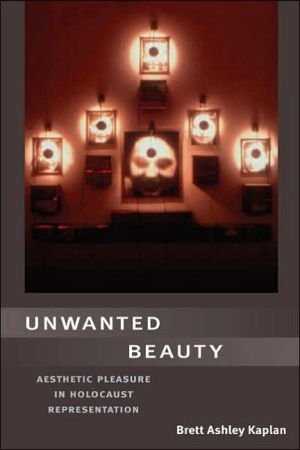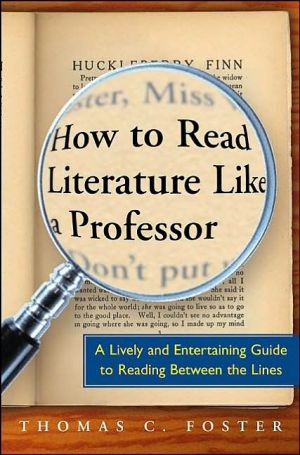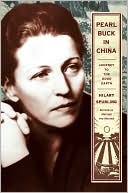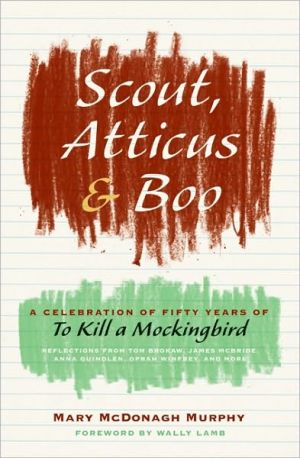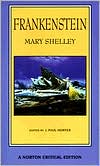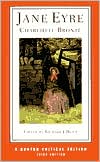Unwanted Beauty
Portrayals of the Holocaust in literature, paintings, and architecture have aroused many\ \ ethical debates. How can we admire, much less enjoy, art that deals with such a horrific\ event? Does finding beauty in the Holocaust amount to a betrayal of its victims?\ \ Brett Kaplan’s Unwanted Beauty meets these difficult questions head on, analyzing a wide range of Holocaust representations in order to argue that a more careful understanding of aesthetics and its relation to history...
Search in google:
Controversial questions about beauty in artistic depictions of the Holocaust
UNWANTED BEAUTY\ AESTHETIC PLEASURE IN HOLOCAUST REPRESENTATION \ \ By BRETT ASHLEY KAPLAN \ UNIVERSITY OF ILLINOIS PRESS\ Copyright © 2007 Board of Trustees of the University of Illinois\ All right reserved.\ ISBN: 0-252-03093-1 \ \ \ \ Chapter One\ THE POLITICS OF AESTHETIC PLEASURE IN HOLOCAUST REPRESENTATION \ Only art has the power of redeeming suffering from the abyss. -Aharon Appelfeld\ "What is this film that I have made? ... Will it transmit the trauma of history in a way that is beneficial? Or is it a thing of exquisite, but ultimately useless, beauty?" Thus the filmmaker in Atom Egoyan's Ararat wonders whether his film about the horror of the Armenian genocide will be a useless aesthetic object or an important historical contribution. This book collapses this opposition between the beneficial and the beautiful by arguing that the unwanted beauty offered by some Holocaust representations transforms Holocaust memory in important, enlivening, and indeed beneficial ways. I have been struck repeatedly by the fact that much prose, poetry, visual art, and architecture representing the Holocaust is beautiful, even though remaining mournful. While it may be counter-intuitive to understand some Holocaust representation as beautiful, I argue that thinking about the role of aesthetic pleasure in complex and multivalent texts opens this traumatic historical event to deeper understanding. Indeed, the works I analyze insist that we continue to examine how the Holocaust resides inour thoughts; because they are beautiful, these works entice our reflection, our attention, and our questioning.\ Unwanted Beauty thus asks several questions: How can we make sense of the often contradictory claims of aesthetics and history? How can we understand the incredible beauty of much Holocaust art? And is there something indecent or unethical about this beauty? Irving Howe echoes some of these questions when he wonders, "Can we really say that in reading a memoir or novel about the Holocaust, or in seeing a film such as Shoah, we gain the pleasure, or catharsis, that is customarily associated with the aesthetic transaction? More disquieting, can we be sure that we do not gain a sort of illicit pleasure from our pained submission to such works?" This book examines the "disquieting" sensation outlined by Howe by looking at multiple genres of Holocaust representation and reconsidering the "illicit pleasure" of their beauty.\ While philosophers and others have endeavored to forge a science of aesthetics, the designation "beautiful" and its attendant "aesthetic pleasure" ultimately entail a subjective stance. In contrast to some notions of beauty as merely pretty or attractive, I use beauty to designate texts that offer ambiguous, diverse, complicated, open-ended reflections on the Holocaust. Because aesthetics is the branch of philosophy dedicated to investigating what pleases the senses, aesthetic questions generally involve pleasure; because history is the branch of the humanities that investigates social change, it often involves pain. The relationship between aesthetics and history, then, or between art and politics, has generally been vexed; yet many readers and viewers of Holocaust literature, art, and memorials confess that where the historical documentary might not affect them deeply, the aesthetic power of art encourages them to remember the Holocaust rather than shunt it aside. I therefore argue that the distinction between history and aesthetics is fluid and that beautiful representations can enhance Holocaust remembrance. As several recent works on aesthetics have observed, beauty is currently enjoying a renaissance; that matters for our understanding of the Holocaust because we must face the role of the "illicit" aesthetic pleasure of unwanted beauty in transforming memories of this important event in twentieth-century history.\ Indeed, since the Second World War, survivors, artists, and scholars have been struggling with the question of how to represent the Holocaust. Some have argued that the Shoah is so traumatic that it should render words speechless and images blank; others have argued that the Holocaust is just as representable as any other historical event. Yet proponents of both views have found that attempting to represent the Holocaust, even if doomed to failure, is a crucial endeavor full of historical, political, and cultural importance. Many observers have argued, however, that there is something unethical about beauty in Holocaust literature, art, and memorials, as if crafting beautiful words or images about the Holocaust constituted a betrayal of its victims or a naïve forgetting of its perpetrators.\ Three main arguments have contributed to the demonization of beauty in Holocaust literature, art, and memorials. First, because a certain kind of beauty was exploited by the Nazi regime, the very concept of beauty has been tainted by its association with fascism. Second, because of his fear of reproducing the horror of the Holocaust and a profound skepticism of the culture industry, in 1949 Theodor Adorno famously claimed that it is barbaric to write poetry after Auschwitz. Consequently, many Holocaust writers and artists have feared the ethical implications of rendering the Shoah in beautiful forms. As I discuss in more detail in chapter 1, Adorno's original maxim-despite his later modification of the claim-has had an enormous impact on artists, writers, scholars, philosophers, and theorists trying to treat the vexed question of how best to represent the Holocaust. As Irving Howe puts it, "I cannot think of another area of literary discourse in which a single writer has exerted so strong, if diffused an influence as Theodor Adorno has on discussions of literature and the Holocaust." Third, because the Shoah has often been seen as historically unique, cultural theorists and survivors have clamored for an equally unique aesthetic-one devoid of beauty-that avoids the representational strategies used to depict other historical crises.\ These three arguments against the beautiful in Holocaust representation have led to a series of aesthetic contortions in Holocaust literature, art, and memorials that often compromise the pedagogical and emotional aims of these texts, works, or spaces. By titling this book Unwanted Beauty I indicate how, in contrast to these three dominant interdictions against beauty in Holocaust representations, the unwanted beauty of such depictions encourages us to see the complexity of the Shoah in ways that conventional works fail to achieve.\ Perhaps this idea of beauty in Holocaust works will strike some as sacrilegious. But survivors such as Aharon Appelfeld, who found that artistic expression seemed repellent immediately after the Holocaust, ultimately argue for sensitive Holocaust representations in order to bridge the "difficult imperatives" of the "desire to keep silence and the desire to speak." Appelfeld explains, "Artistic expression after the Holocaust seem[ed] repugnant, disgusting. The pain and suffering called either for silence or for wild outcries. Any embellishment or sweetening was jarring. Moreover, art, and not without reason, was linked in our minds with a sphere of European culture of which we had been the victims."\ Appelfeld here summarizes the plea for silence in the face of horror, the turning away from artistic "sweetening" or aesthetification, and the sense that an intimate link prevails between the structure of European culture and the Holocaust. But as a Holocaust artist, Appelfeld goes on to argue for artistic expression of the Holocaust, concluding that "we must transmit the dreadful experience from the category of history into that of art." Appelfeld also notes that Holocaust studies has moved away from the often paralyzing debates over representation that stymied earlier generations of critics who found artistic expression "repugnant." In fact, recent works such as Susan Gubar's Poetry After Auschwitz, Norman Kleeblatt's collection of essays about the Jewish Museum show Mirroring Evil, and Shelly Hornstein, Laura Levitt, and Laurence Silberstein's collection of essays on contemporary Holocaust art, Impossible Images, have addressed some aspects of this new cultural turn toward unwanted beauty, thus opening up fascinating questions about the available means of Holocaust representation.\ Moreover, works by some historians-notably Saul Friedländer and Hayden White-argue that there is no crisis of representation regarding the Holocaust. Friedländer claims that "The extermination of the Jews of Europe is as accessible to both representation and interpretation as any other historical event. But we are dealing with an event which tests our traditional conceptual and representational categories, an 'event at the limits.'" Friedländer thus suggests that an adequate representation of the Holocaust is possible, as long as we understand that the representation will be complicated by the fact that the Holocaust was a "limit" event. Similarly, White claims: "I do not think that the Holocaust, Final Solution, Shoah, Churban, or German genocide of the Jews is any more unrepresentable than any other event in human history." White thus debunks the mystical appeal of the argument that because the Holocaust can be seen as "unique" historically it should be "unique" aesthetically as well. In agreement with Friedländer and White, then, historical studies now tend to argue that while the Holocaust was unprecedented in scale, other twentieth-century genocides have demonstrated that the hatreds exhibited during it were not "unique."\ For an example of how some have argued that the "uniqueness" of the Nazi genocide requires its own aesthetic approach, consider Elie Wiesel's claim that "The Holocaust is not a subject like all the others. It imposes certain limits. There are techniques that one may not use, even if they are commercially effective. In order not to betray the dead and humiliate the living, this particular subject demands a special sensibility, a different approach, a rigor, strengthened by respect and reverence, above all faithfulness to memory."\ Likewise, in reflecting on the difficulty of writing about his experience in the camps, Wiesel remarks that "All words seemed inadequate, worn, foolish, lifeless, whereas I wanted them to sear. Where was I to discover a fresh vocabulary, a primeval language?" Similarly, Lawrence Langer remarks that "The universe of dying that was Auschwitz yearns for a language purified of the taint of normality." Wiesel and Langer search for "fresh" words, for "a different approach," for a "purified" language so that a new aesthetic can equal the new form of historical event the Nazi genocide imposed on our history. This sense of aesthetics is thus driven by two factors: a stunned sense that language has failed and a fear of betraying the dead.\ In a study of the United States Holocaust Memorial Museum (a site I discuss in chapter ), Adrian Dannatt observes that "We are now beyond the simple platitude that the Holocaust should not be given physical form or expression. Such icy logic begins to look like 'Good Taste'-a particularly dangerous form of Modernist probity. A building, a poem, song or film ... is surely always better than the elegant silence of superiority when it comes to dealing with the Holocaust."\ Dannatt's argument is opposed by those who find that some narratives are unethical because they encourage forgetting by seducing us into the cozy idea that these narratives are sufficient to engender Holocaust memory. Jean- François Lyotard is a representative of the group of scholars whose ideas became prevalent in the late 1980s and early 1990s, and who oppose narrative modes of representation in favor of allusive, oblique, and broken models. Lyotard insists that "It is to be feared that word representations (books, interviews) and thing representations (films, photographs) of the extermination of the Jews and of 'the jews,' by the Nazis bring back the very thing against which they work unceasingly." Similarly, Geoffrey Hartman warns that "popular representations emerge that are uncomfortably close to fantasies that may have played their part in the genocide." Rather than encouraging forgetting through the facile closure promised in some representations, Lyotard and Hartman argue that to avoid forgetting one must always allow the rumble of the past to persist through fragmentation and disruption. With the exception of some of the commemorative sites discussed in chapter , most of the works I examine in this book are effective through fragmentation and disruption yet their beauty offers an aesthetic pleasure that encourages us to grapple with the Holocaust. These works embody an argument for representation of the Holocaust and an end to the clamoring for "the elegant silence of superiority."\ As a case study of the transformation from a resistance against representing the Holocaust toward an encouragement of representation, consider James Young's self-examination of his change in position from a self-proclaimed "skeptic" of the very project of building a memorial to the murdered Jews of Europe in Berlin (another site that I discuss in chapter) to an advocate of the project. As one of the commissioners charged with deciding which model for the memorial would be chosen, Young was immersed in the vociferous debates regarding the aesthetic, pedagogical, ethical, and political functions of the Berlin memorial that absorbed parts of the cultural and public spheres in Germany for over ten years. Young reports that initially, in 1997, when he became involved in the Berlin project, he felt that such a public and high-profile memorial would encourage forgetting by becoming a "hermetically sealed vault for the ghosts of Germany's past," thus "finish[ing] memory itself." Eventually, by the time Peter Eisenman and Richard Serra's design-which has finally been built, after overcoming many obstacles-was chosen in 1999, Young supported the project on the grounds that "I began to see how important it would be to add a space to Germany's restored capital deliberately designed to remember the mass murder of Europe's Jews." Thus Young's position changed from the Lyotardian anti-representational form, in which closure supposedly encourages forgetting, to the pro-representational form, in which the visibility of Holocaust imagery creates meaning and therefore opens up a space for memory. Young's transformation perhaps represents the larger cultural shift away from an insistence on the absolute impossibility of Holocaust representation toward recognizing how attempts to represent it, even if flawed, can encourage complex forms of memory work.\ With this welcome shift away from the paralysis of silence as the only ethical means of Holocaust representation, we need to examine how the production of Holocaust literature, art, and memorials has created meaning through the unwanted beauty feared in Adorno's original maxim. Asking about the power of unwanted beauty in Holocaust representation in turn opens up questions about the representational strategies available for making sense of the twentieth century, for the turn to unwanted beauty raises the larger question of how aesthetics-and particularly the discussion of beauty-have changed in recent humanities discourse. Adequately tracing the history of aesthetics, and in particular the vagaries of the category of the beautiful, is much beyond the scope of this introduction, yet the following comments situate the argument I make in this book about unwanted beauty in the Holocaust within the deeper question of the place of beauty in the humanities.\ (Continues...)\ \ \ \ \ Excerpted from UNWANTED BEAUTY by BRETT ASHLEY KAPLAN Copyright © 2007 by Board of Trustees of the University of Illinois. Excerpted by permission.\ All rights reserved. No part of this excerpt may be reproduced or reprinted without permission in writing from the publisher.\ Excerpts are provided by Dial-A-Book Inc. solely for the personal use of visitors to this web site. \ \
